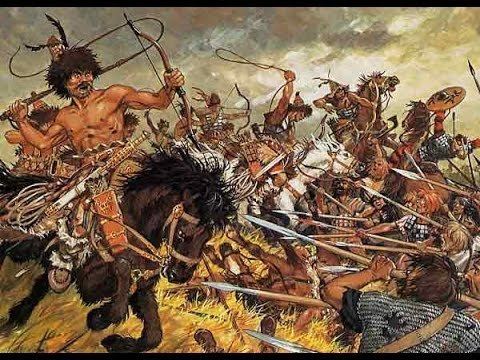unknown unknown Date 447 AD | heavy heavy Result Hunnic victory | |
 | ||
Similar Battle of Ad Decimum, Battle of Soissons, Battle of Ravenna, Battle of the Frigidus, Battle of Dara | ||
The Battle of the Utus was fought in 447 between the army of the Eastern Roman (Byzantine) Empire, and the Huns led by Attila at what is today the Vit river in Bulgaria. It was the last of the bloody pitched battles between the Eastern Roman Empire and the Huns, as the former attempted to stave off the Hunnic invasion.
Contents
The details about Attila's campaign which culminated in the battle of Utus, as well as the events afterwards, are obscure. Only a few short passages from Byzantine sources (Jordanes' Romana, the chronicle of Marcellinus Comes, and the Paschal Chronicle) are available. As with the whole activity of Attila's Huns in the Balkans, the fragmentary evidence does not permit an undisputed reconstruction of the events.
Total war attila huns part 1 battle of the utus
Battle
Beginning in 443, when the Eastern Empire stopped its tribute to the Huns, Attila's army had invaded and ravaged the Balkan regions of the Eastern Empire. Attila's army invaded the Balkan provinces again in 447. A strong Roman force under Arnegisclus, magister utriusque militiae, "master of both forces" (both foot and horse) of Thrace, moved out of its base at Marcianople westwards and engaged the Hunnic army at Utus in the Roman province of Dacia Ripensis. Arnegisclus was one of the Roman commanders who had been defeated during Attila's campaign of 443.
The Roman army was most likely a combined force, including the field armies of Illyricum, Thrace, and the Army in Emperor's Presence. The Romans were defeated, but it seems that losses were severe for both sides. Arnegisclus' horse was killed and he fought bravely on foot until he was cut down.
Aftermath
Marcianople fell immediately to the Huns, who destroyed it; the city then lay desolate until the Emperor Justinian restored it one hundred years later. Even worse, Constantinople, the capital of the eastern half of the Roman empire, was under the grave threat of the Huns, as its walls had been ruined during an earthquake in January 447 and its population suffered from the ensuing plague. However, the Praetorian prefect of the East Constantinus managed to repair the walls in just two months by mobilizing the city's manpower, with the help of the Circus factions. These hasty repairs, combined with the urgent transfer of a body of Isaurian soldiers into the city, and the heavy losses incurred to the Huns' army in the Battle of Utus, forced Attila to abandon any thought of besieging the capital.
Instead, Attila marched south and laid waste the now-defenseless Balkan provinces (including Illyricum, Thrace, Moesia, Scythia and both provinces of Roman Dacia) until he was turned back at Thermopylae. Callinicus of Rufinianae wrote in his Life of Saint Hypatius, who was still living in Thrace at the time, that "more than a hundred cities were captured, Constantinople almost came into danger and most men fled from it", although this was probably exaggerated. Peace was only restored when a treaty was signed a year later in 448. By this treaty, the Eastern Emperor Theodosius II agreed to pay Attila a large annual tribute. Additionally, a vast no man's land in the Roman territory was created; this extended to the distance of a five days' journey south of the Danube and functioned as a buffer zone.
